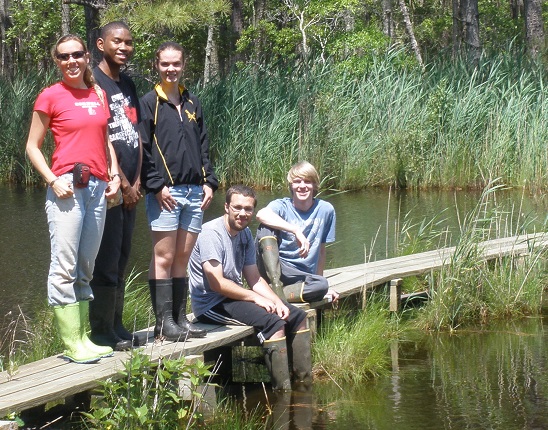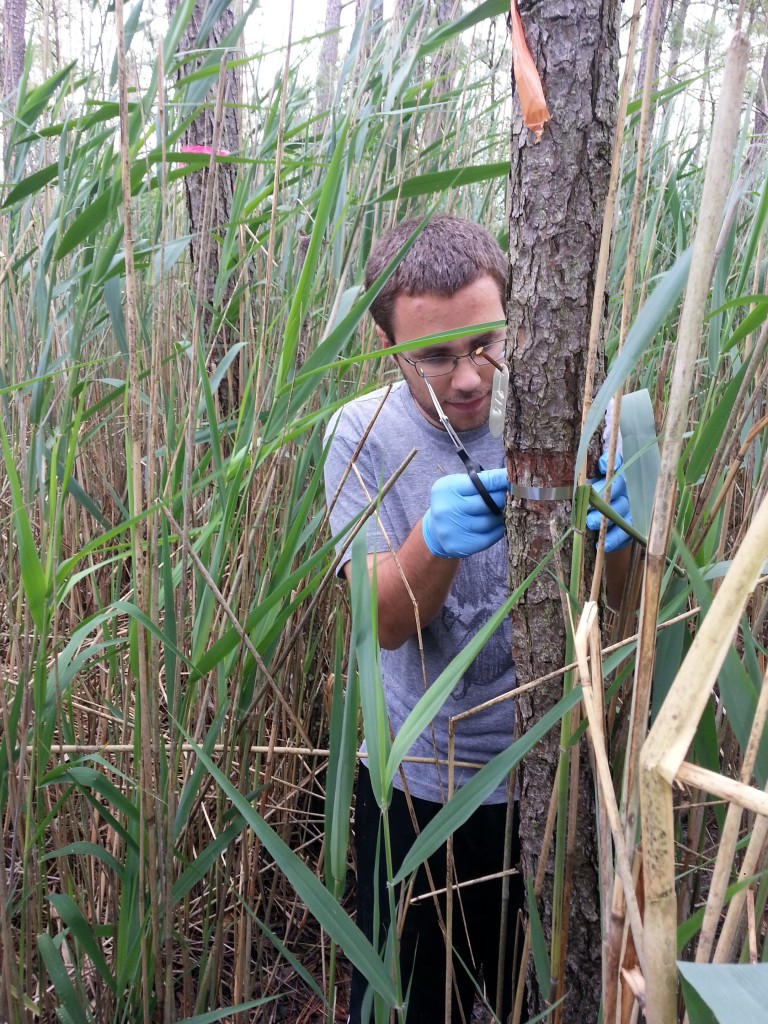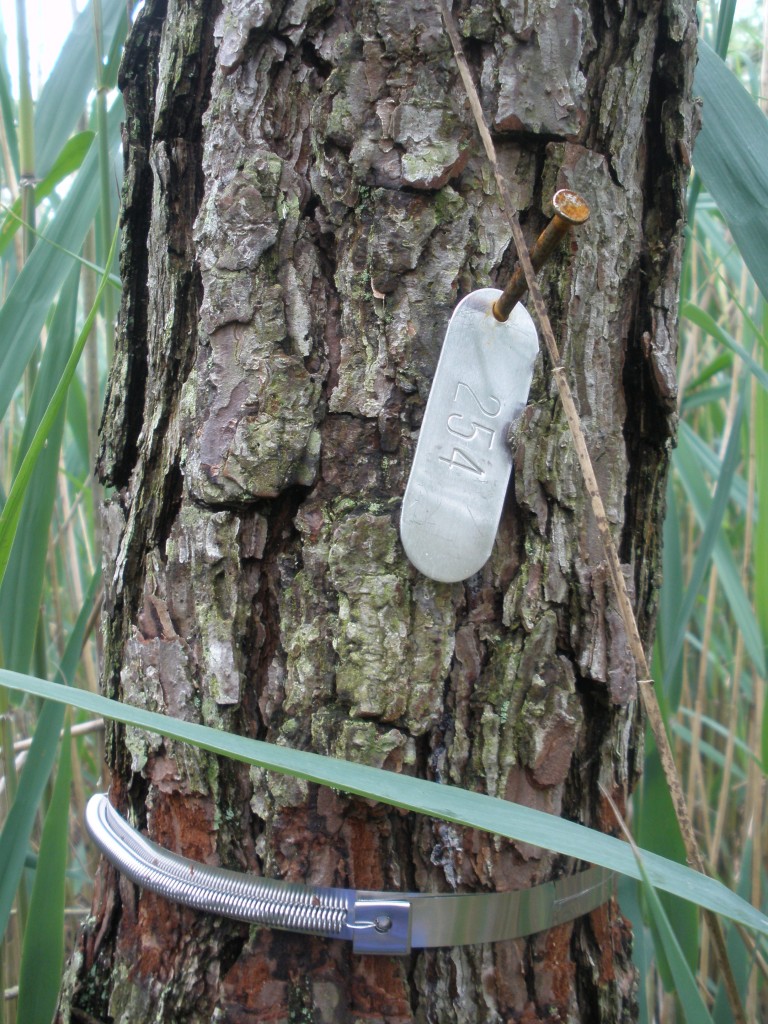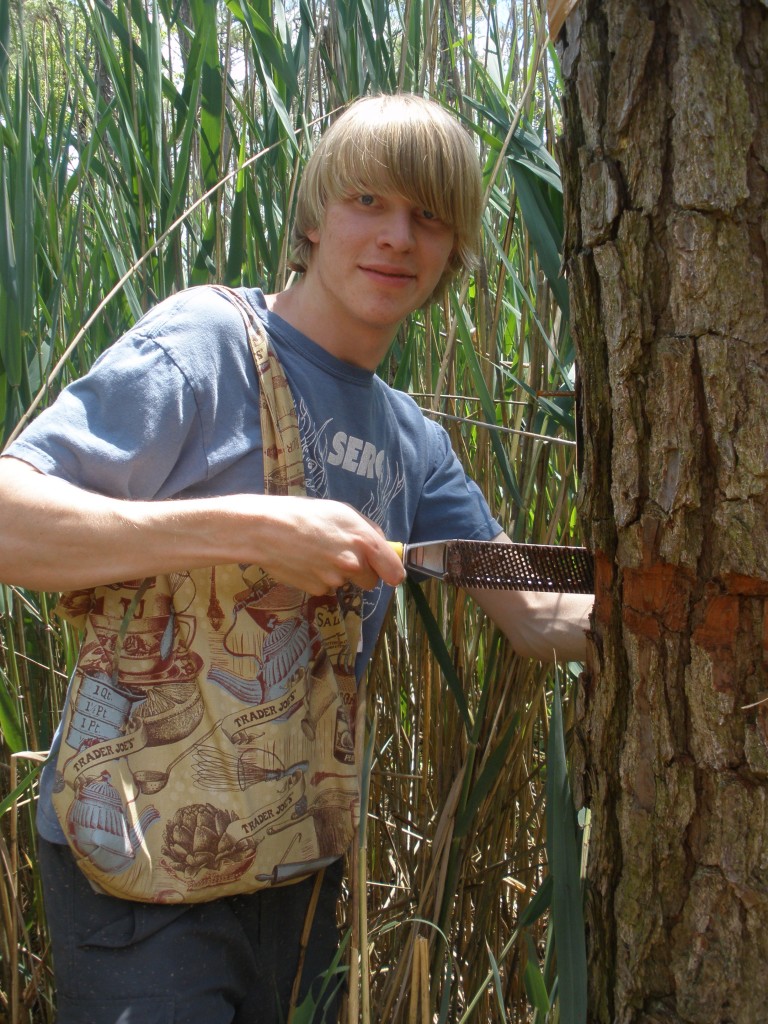Citizen scientists brave dense swamps to find truth behind Phrag
By Sarah Hansen
Sea-level rise triggered by climate change affects coastal ecosystems first. Marshes and wetlands along the shoreline creep inland, infringing on forest habitats. Scientists have strong evidence that too much water will gradually drown the trees. But an invasive reedy plant, known as “Phrag” from its scientific name, Phragmites australis, might be the forests’ unlikely protector, delaying drowning by about a decade.
Invasive Phrag (there is a native subspecies, as well) first came to the U.S. from Europe over 200 years ago. The native variety coexists peacefully with other plants, but the invader takes over a habitat, choking off other flora. Only recently, however, has its population growth exploded. Scientists at the Smithsonian Environmental Research Center are trying to find out whether large Phrag populations in wetlands help or hurt tree growth. It might seem counterintuitive, but scientists hypothesize that the Phrag is actually helping trees survive as sea level rises. By removing some of the water, Phrag may prevent trees from drowning.
“Sea-level rise is not simple or straightforward,” said Alison Cawood, citizen science coordinator at SERC, and its effects on ecological relationships can be tricky to tease out. But that’s exactly what SERC senior scientist Patrick Megonigal, members of his lab, and a crew of volunteers coordinated by Cawood are doing on Maryland’s Eastern Shore.
“I’d really like to see this project through to the end,” said Jack Hays, a volunteer who previously worked as an intern on this research.
The project involves measuring tree growth over several years at a private hunting reserve of more than 6500 acres near Cambridge, Md. Here, the loblolly pine, a commercially important evergreen that grows in the southeastern U.S., is the focal tree species. To set up the study, we banded the pines with “dendrometers” – metal strips that circle the tree’s trunk. First, someone uses a “rasper” to remove a thin layer of bark on the tree’s surface. Then she attaches the band to the tree. A spring mechanism allows the band to expand as the tree grows, and anyone can measure the change in diameter with precise calipers, wrench-size tools with sliding arms that measure thickness.
The banding process is labor-intensive – but it’s made even more difficult by the Phrag. In early June it stands almost two meters tall and creates a claustrophobic jungle throughout the experimental plots. Even with bright sunshine, it was hard for us volunteers to see each other as little as a few meters away.
“I’ll be glad when we remove half of the Phrag,” said Hays. Another part of the experiment involves removing all the Phrag from half of the plots (they’re laid out in pairs throughout the reserve) to compare growth of trees with and without Phrag in their surroundings.
Other volunteers have spent less time at the site than Hays, but are still valuable. The day I visited, Rachel Hager, Will Sexton, and Kellson Wong were also helping Cawood. With so many hands, we got through the work much more quickly than expected. “I just can’t get over it,” Cawood exclaimed when we finished at 2:30p.m.
In the not-so-distant future, though, citizen scientists may get to support this project without ever experiencing the character-building process of banding trees in the marsh. SERC ecologist Sean McMahon and his intern James Biddle are working with Jon Chappell, Senior Scientist at the Smithsonian Astrophysical Observatory in Cambridge, Ma to test a more elegant system for measuring tree growth. The team is developing software that can measure tree growth by analyzing digital images of tree trunks. The method would rely on the general public taking photos of banded trees and uploading them to a website.
“That is citizen science at the highest level,” said Cawood. She envisions QR code stickers on trees alongside trails throughout the U.S. Hikers could use the code to access information about that particular tree, and of course add their own photo to the database. “It would be so cool. I would be so excited to work on that.”
While casual citizen scientists will be able to help by snapping photos trailside, trees deep in the marsh will still need to get banded and photographed, too. Hats off to the dedicated volunteers still slogging through the Phrag.

We did it! From left to right: Sarah Hansen, Kellson Wong, Rachel Hager, Jack Hays, Will Sexton.





Most interesting and informative